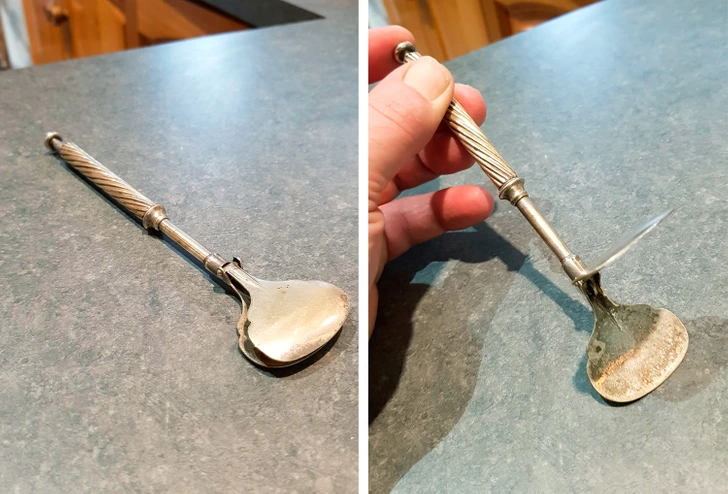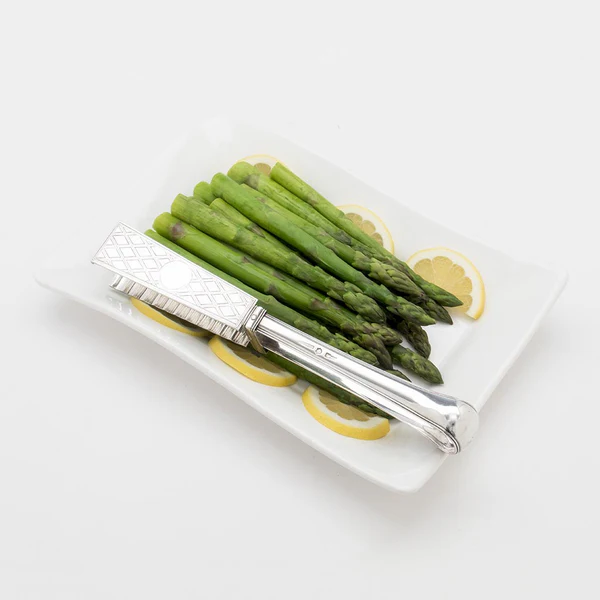Ever stumbled across an old, unusual object in your grandma’s kitchen and wondered, “What on earth is this?” If you’ve come across something that looks like a fancy set of tongs, you might be holding an antique asparagus server. These utensils may seem obscure in today’s kitchens, but they once played a key role in elegant dining.
What Are Asparagus Servers?

Asparagus servers, also known as asparagus tongs, were specialized utensils designed for serving delicate spears of asparagus. These utensils are crafted to gently grip and transfer asparagus spears without damaging them. They typically feature intricate designs, making them not only functional but also aesthetically pleasing.
Asparagus tongs have a classic V-shaped design with slightly serrated or undulating ends, allowing for a secure grip. The raised terminals ensure you can pick up the asparagus without breaking the fragile spears. Asparagus servers, on the other hand, feature broader, flatter ends, enabling you to transfer multiple spears at once.
In some modern kitchens, you might not see these specialized tools as much. However, asparagus servers and tongs are still popular among collectors, especially those interested in antique kitchenware and historical dining practices.
The Design and Functionality of Asparagus Tongs
The main function of asparagus tongs or servers is to provide a way to delicately handle and serve asparagus spears. Their designs often reflected the formality of the time, as these were utensils crafted for elegant dining settings. Silver asparagus servers, in particular, were common in wealthy households, often used during formal dinners to showcase sophistication.
Asparagus tongs are made to grip individual spears, offering control without damaging or bruising the delicate vegetable. The tongs’ design often features embellishments, making them a conversation piece as much as a functional tool. The broader servers, however, are more suited for transferring multiple spears at once, making them ideal for serving larger portions or plating dishes efficiently.
History of Asparagus Servers and Tongs
Asparagus has a long history, dating back to ancient Rome. However, it was only introduced to England in the sixteenth century, where it gained popularity among the wealthy and aristocratic classes.
By the early eighteenth century, asparagus had developed a reputation as an exotic and sophisticated vegetable. It became a fashionable accompaniment to many dishes, and its association with luxury meant that serving it required equally elegant tools. Victorian England, in particular, saw the rise of asparagus tongs and servers as part of the highly formalized dining etiquette of the time.
During the Victorian era, silver asparagus servers were often included in comprehensive flatware sets. These tongs weren’t just plain utensils — they were pieces of art. Many were engraved or decorated with ornate patterns and designs, reflecting the opulence of the era. In fact, a well-stocked Victorian dining room would almost certainly have featured silver asparagus tongs among its many other specialized serving tools.
Why Were Asparagus Tongs So Popular in Victorian Dining?

The Victorians were all about formality and etiquette. Dining was more than just about eating; it was a social event that required decorum and grace. Specialized utensils like asparagus tongs were not only practical but also helped reinforce the idea of a well-mannered and refined household.
Asparagus tongs became a symbol of elegance and sophistication. They allowed diners to serve themselves gracefully without fumbling with spears of asparagus or using regular forks and knives that might damage the delicate vegetable. For Victorian society, proper dining etiquette was a way to display wealth and status, and having specialized serving tools for different foods was just part of that picture.
Antique Asparagus Servers as Collectibles
Today, antique asparagus tongs and servers are highly collectible items. Their intricate designs, historical significance, and connection to a bygone era of formal dining make them attractive to antique collectors and enthusiasts of vintage kitchenware.

Collectors prize silver asparagus servers, especially those from renowned silversmiths or manufacturers, for their craftsmanship and historical value. Some of the more ornate versions might feature engraved patterns, pierced decorations, or intricately designed handles that add to their beauty and worth. They are often sought after at auctions or in antique stores, making them more than just a relic of the past but a valuable piece of history.
How Asparagus Tongs Are Used Today
While modern kitchens tend to favor more practical tools, some households and fine-dining establishments still use asparagus servers, particularly during formal dinners or special occasions. In many cases, they serve as a nod to the traditions of the past, adding a touch of elegance to the dining experience.
For those who collect vintage kitchenware, asparagus tongs can also be displayed as decorative items. Their detailed designs make them suitable for display in glass cabinets or as part of a kitchen’s vintage aesthetic. Even though they may not be as commonly used as they once were, asparagus tongs still hold their place in the world of fine dining and collectibles.
The Enduring Appeal of Asparagus Servers

The appeal of asparagus servers lies in their blend of form and function. These utensils were crafted with purpose but designed with beauty in mind. Even though we may no longer live in an era where specialized serving tools are required for every meal, the history and craftsmanship behind asparagus tongs give them enduring value.
Whether you’re lucky enough to stumble upon one in your grandma’s kitchen or you come across a beautifully ornate piece in an antique store, asparagus servers represent a time when dining was as much about etiquette and presentation as it was about nourishment. These tools remind us that even the simplest of vegetables, like asparagus, were once worthy of their own specialized serving instruments.
Conclusion
Asparagus tongs and servers might seem like a peculiar find in today’s kitchens, but they carry a rich history that dates back centuries. Their evolution from practical tools to collectibles reflects the changing nature of dining etiquette and culinary traditions. While you may not use asparagus tongs regularly, their place in history is undeniable, and their design remains a testament to the craftsmanship and elegance of a bygone era. Next time you find one of these unique items in an old kitchen or an antique shop, take a moment to appreciate its story, and the fine dining practices it represents.


